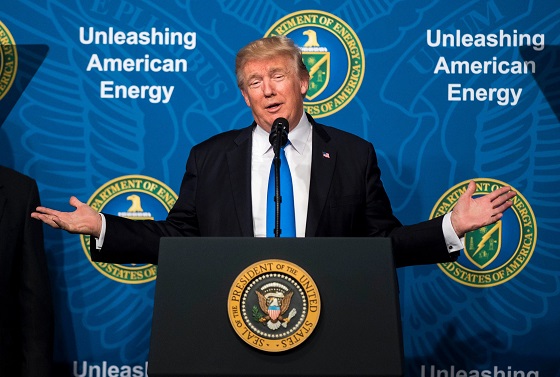conflict
America Is Really Bad At Foreign Interventions. Why Does Biden Think Ukraine Will Be Any Different?

 From the Daily Caller News Foundation
From the Daily Caller News Foundation
One of the very first operations undertaken by the Central Intelligence Agency (CIA) after its founding in 1947 was to create an army to fight the Soviets in Ukraine. Dubbed Operation Nightingale, the CIA aimed to reconstitute Nazi death squads in Ukraine that the Germans called Nachtigall.
The newly created U.S. intelligence community figured we’d partnered with communists to destroy fascism. Now, post war, we could team with the fascists to destroy communism.
Unsurprisingly, Nightingale was a spectacular failure. The Kremlin’s spies discovered every aspect of the plan well before it was initiated.
In its early years, the CIA lurched from one fiasco to another. On Sept. 20, 1949, CIA analysts declared the Soviet Union would not produce a nuclear weapon for at least another four years. Three days later, Truman had to tell the country that Russia had the bomb.
Sadly, things are hardly better today.
In 2021, U.S. intelligence agencies looked into their crystal ball and told senior congressional leaders that Afghanistan’s national security forces could keep the Taliban at bay for a year or perhaps longer. The Taliban took Kabul in a matter of hours.
“Clearly we didn’t get things right” on that intelligence, National Security Council spokesman John Kirby dryly remarked later.
The next year, U.S. intelligence took the opposite tack on Ukraine, predicting the capital, Kiev, might fall within days of Russia’s 2022 invasion. Two years in, Kiev is still in the Ukraine column.
Bonehead analysts even offered to evacuate Volodymyr Zelensky — evidently having learned nothing from the disastrous U.S. evacuation of Afghan President Ashraf Ghani.
What did they get right? Avril Haynes, the Director of National Intelligence, applauded her agency for correctly predicting that Russia planned to invade Ukraine. “We assess President Putin is prepared for prolonged conflict,” she testified in May 2022. You don’t say? The 100,000 troops Putin amassed on Ukraine’s border were likely a helpful clue.
Many in our intelligence community scoffed at Putin’s criticism of America’s heavy hand in Ukraine. Those who dared point out that the CIA had injected former Nazis into Ukraine after World War II were labeled stooges of Russian disinformation. They’d prefer we not recall the U.S.’s more provocative recent history in Ukraine, much of it based on bad American intelligence.
During Ukraine’s Maidan demonstrations in 2013, U.S. officials, including then-Vice President Joe Biden, saw an opportunity to fulfill the predictions of President Jimmy Carter’s national security advisor, Zbigniew Brzezinski, who postulated that “without Ukraine, Russia ceases to be a Eurasian empire.”
By pulling Ukraine closer to Europe, NATO and the U.S., they reasoned we could de-claw the Russian bear. Thus, the U.S. supported ousting the democratically-elected Ukraine president, Viktor Yanukovych. Victoria Nuland, Obama’s Assistant Secretary of State for European and Eurasian Affairs, boasted that the United States had “invested” $5 billion to build Ukraine’s credentials to join the European Union.
She passed out actual cookies during the coup. Nuland was later caught on tape plotting who would be Ukraine’s post-coup president and getting Joe Biden to give an “attaboy” that would “F**k the EU” for not being aggressive enough with Moscow.
On cue, Biden endorsed Ukraine’s uprising: “Nothing would have greater impact for securing our interests.” Yanukovych was ousted and in the months that followed, Nuland pushed the U.S. to arm Ukraine and carefully crafted the media message, “I would like to urge you to use the word ‘defensive system’ to describe what we would be delivering against Putin’s offensive systems.”
If Nuland’s regime-change playbook sounds familiar, stop a moment and ponder that her resume also includes serving as Vice President Dick Cheney’s principal deputy national security advisor. Her husband, Robert Kagan, was among the chief proponents of America’s swell idea to bring democracy and stability to Iraq by toppling Saddam Hussein.
Other U.S. players meddled in Ukraine as well. On April 12th, 2014, CIA Director John Brennan secretly visited Ukraine, kicking off a new covert war with Russia. In a recent report by The New York Times, turns out the CIA has operated a dozen secret bases in Ukraine since his visit. Little wonder Brennan feared a Trump victory.
Trump’s surprising win in 2016 undermined all this maneuvering. “I really hope that you and President Putin can get together and solve your problem,” Trump told Zelenskyy. “That would be a tremendous achievement.” Trump lowered the temperature, but pausing weapons delivery to Ukraine became the root cause of his first impeachment.
Within six weeks of taking office, the Biden administration cranked up aid to Ukraine, delivering $125 million in March 2021. As of two weeks ago, that figure now tops $185 billion.
America holds a long list of failed interventions based on bad intelligence: Afghanistan, Libya, Iraq, Panama, Haiti, Serbia, Grenada, Iran, South Vietnam, Congo, Cuba, Guatemala, Albania and the Dominican Republic, among others.
It doesn’t take an intelligence genius to predict the ultimate outcome of our latest dalliance in Ukraine.
Morgan Murphy is a former DoD press secretary, national security adviser in the U.S. Senate, a veteran of Afghanistan.
The views and opinions expressed in this commentary are those of the author and do not reflect the official position of the Daily Caller News Foundation.
Artificial Intelligence
AI Drone ‘Swarms’ Unleashed On Ukraine Battlefields, Marking New Era Of Warfare


From the Daily Caller News Foundation
Artificial intelligence-powered drones are making their first appearances on the battlefield in the Russia-Ukraine war as warfare creeps closer to full automation.
In bombardments on Russian targets in the past year, Ukrainian drones acting in concert were able to independently determine where to strike without human input.
It’s the first battlefield use of AI “swarm” technology in a real-world environment, a senior Ukrainian official and Swarmer, the company who makes the software, told the Wall Street Journal in a Tuesday report. While drones have increasingly defined modern battlefields, swarms until now had been confined to testing rather than combat.
“You set the target and the drones do the rest,” Swarmer Chief Executive Serhii Kupriienko told the WSJ. “They work together, they adapt.”
So far, the Swarmer technology has been used hundreds of times to target Russia assets, but was first used a year ago to lay mines on the front, the Ukrainian official told the WSJ. The software has been tested with up to 25 drones at once, but is usually utilized with only three.
Kupriienko told the WSJ that he was preparing to test up to 100 drones at once with the linking software.
A common arrangement used on the battlefield includes one reconnaissance drone to scout out the target and two explosive drones delivering the payload on target, the official told the WSJ.
While Western nations such as the U.S., France and the United Kingdom are also pursuing drone swarm technology, they have not deployed swarm technology on the battlefield the way Ukraine has, according to the WSJ. Currently, autonomous weapons are not regulated by any international authority or binding agreement, but ethical concerns around the technology has led many to call for increased regulation of weapons like the Swarmer system.
The Ukrainian Ministry of Foreign Affairs did not immediately respond to the Daily Caller News Foundation’s request for comment.
conflict
Trump Pentagon Reportedly Blocking Ukraine From Firing Western Missiles Deep Into Russia


From the Daily Caller News Foundation
The Department of Defense has spent months blocking the Ukrainian military from using American and British-made missiles to hit targets deep inside Russia, The Wall Street Journal reported Sunday, citing unnamed U.S. officials.
Undersecretary of Defense for Policy Eldridge Colby reportedly designed the procedure to review requests to carry out the long-range strikes with weapons that are either of U.S. origin or that require American intelligence or use components provided by the U.S., according to the WSJ. Secretary of Defense Pete Hegseth reportedly has the final say on whether Ukrainian forces can use the MGM-140 ATACMS (Army Tactical Missile System) to hit targets in Russia.
The reported blocks on missile strikes coincides with a Trump administration effort to broker a peace deal between Russia and Ukraine. A Pentagon spokesperson declined to comment further on the matter.
BREAKING: President Vladimir Putin reacts to B-2 Flyover pic.twitter.com/1mzVn7DxlW
— Jack Poso 🇺🇸 (@JackPosobiec) August 15, 2025
The Biden administration allowed Ukraine to carry out strikes with ATACMS in November, weeks after President Donald Trump won the 2024 election, the New York Times reported. Trump criticized the move during a December interview with Time magazine.
“It’s crazy what’s taking place. It’s crazy,” Trump said. “I disagree very vehemently with sending missiles hundreds of miles into Russia. Why are we doing that? We’re just escalating this war and making it worse. That should not have been allowed to be done.”
Trump and Russian President Vladimir Putin met in Alaska on Aug. 15 for a summit meeting during which Trump sought to secure a cease-fire in Russia’s war with Ukraine. As Trump greeted Putin, a B-2A Spirit stealth bomber and several fighters carried out a flyover of Elmendorf Air Force Base.
Trump met with Ukrainian President Volodymyr Zelensky and major European leaders on Aug. 18 to update them on the summit.
In July, Trump reached an agreement with NATO where members of the alliance would purchase weapons, including MIM-104 Patriot surface-to-air missiles, and donate them to Ukraine.
-

 Justice1 day ago
Justice1 day agoCarney government lets Supreme Court decision stand despite outrage over child porn ruling
-

 Daily Caller2 days ago
Daily Caller2 days agoUS Eating Canada’s Lunch While Liberals Stall – Trump Admin Announces Record-Shattering Energy Report
-

 Business1 day ago
Business1 day agoCarney’s budget spares tax status of Canadian churches, pro-life groups after backlash
-

 COVID-191 day ago
COVID-191 day agoFreedom Convoy leader Tamara Lich to appeal her recent conviction
-

 Business2 days ago
Business2 days agoPulling back the curtain on the Carney government’s first budget
-

 Energy2 days ago
Energy2 days agoEby should put up, shut up, or pay up
-

 Business2 days ago
Business2 days agoThe Liberal budget is a massive FAILURE: Former Liberal Cabinet Member Dan McTeague
-

 Daily Caller1 day ago
Daily Caller1 day agoUN Chief Rages Against Dying Of Climate Alarm Light









